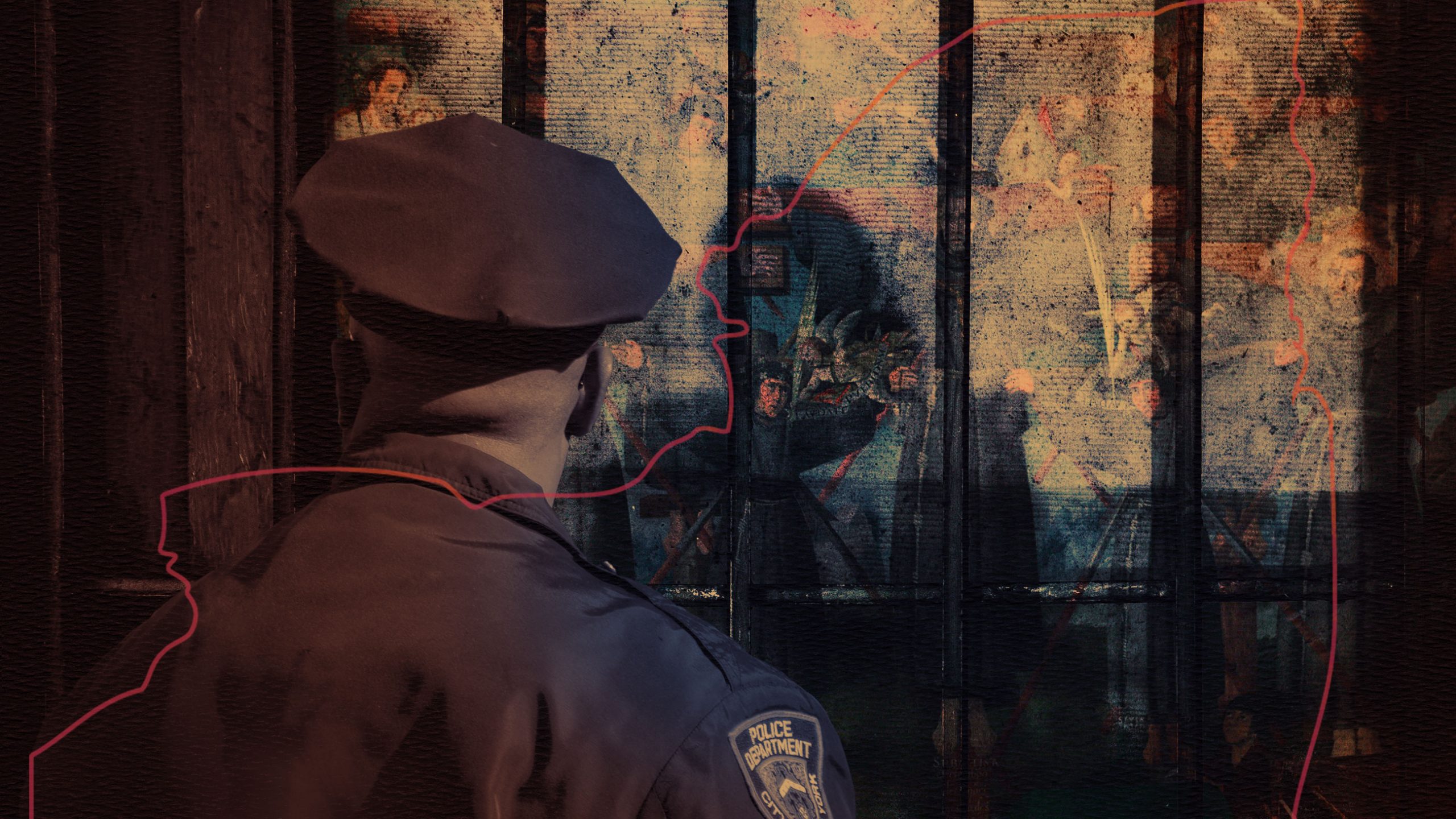Cynical politicians endanger their own citizens for the sake of mob appeasement.
From Broken Windows to Broken Streets

Police must increasingly step in after civil society has failed.
Half a decade ago, I was honored to interview the late criminologist George Kelling for a magazine article I wrote about how New York City, starting in the early ’90s, snatched its subways back from two decades of ceaseless violent crime. Kelling told me something that didn’t make it into the article, but that has stuck with me over the past few years’ often-unproductive debates over public order: policing too often starts from a point of failure. That is, police enter a tense situation only after multiple, better ways to defuse that situation have already failed. Police, in this sense, aren’t first responders but last responders.
This maxim is true of the broken-windows policing theory, the much-misunderstood concept that Kelling and his co-author, political scientist James Q. Wilson, introduced to the public in an 1982 Atlantic article. In that essay, Kelling and Wilson wrote, “if a window in a building is broken and left unrepaired, all the rest of the windows will soon be broken…. one broken unrepaired window is a signal that no one cares, and so breaking more windows costs nothing.”
Critics misinterpret this thesis in thinking that police and the overall justice system are the first line of defense against broken windows: that is, police should arrest a person who breaks a window, and that person should serve some punishment, so that his example serves as a deterrent to others.
Of course, a person who commits a crime should expect commensurate consequences. But a healthy neighborhood—whether peopled by poor people or rich ones, or people in between—largely protects itself from vandalism and other low-level crimes that signal disorder. Someone smashes a window or scrawls graffiti across it. The owner of the property finds the damage, swears an epithet under his breath, and quickly repairs it. In that way, one broken window can’t become two or three.
It’s only when the property owner doesn’t repair the damage quickly for one reason or another that one broken window begets a building—and street—littered with broken glass. The owner’s property is already empty; he can’t find a tenant. Fixing the window thus isn’t worth the cost. One broken window breeds another—and one abandoned building becomes two and three and a whole block.
Similarly, in a thriving neighborhood, a resident bothered by teenagers playing music loudly across the street doesn’t call the police as her first recourse. She instead leans out the window and politely asks her neighbors to turn it down, as her baby is sleeping. Her teenaged neighbors redden and comply, in part because they don’t want their parents to find out about their unruly afternoon behavior. None of the teens would dream of lighting up a marijuana joint in full public view, or drag-racing their cars past their neighbors’ homes—because they know the old lady who looks out the window all day would tattle to their fathers. “Most cases” of disorder “are handled informally on the street,” wrote Kelling and Wilson.
It’s only when these social dynamics break down that the police must serve as the primary arbiters of order. Ask yourself: how often do you need the police visibly to maintain order in your own neighborhood? If the answer is often, something has already failed. In such cases, a young mother is afraid to interact with her rowdy neighbors—as she is terrified they might shoot her. A store owner who finds vandalism in the morning knows that a psychotic band of anarchists, despite being well-known to the authorities, will only break his window again, and suffer no punishment—and so it isn’t worth fixing the panes of glass.
Seth Barron’s example in The Last Days of New York points up this truth: police enter only when other actors have failed. Writing of Jazmine Headley’s 2018 arrest, Seth writes:
In an ideal world, none of this would have happened. Ideally, no one would lose her voucher for an unexplained reason. The welfare office would have plenty of extra seats. Jazmine Headley would have been less obstreperous. The officers would have been a little more tolerant. The crowd of people bored silly sitting in a waiting room wouldn’t have hyped up the confrontation into a hysterical frenzy.
Yet the benefits-office waiting room wasn’t an ideal world, in which an observer sees a tired mother with a baby and offers her a seat. The benefits-dispensing bureaucracy, by definition, is a system of adversarial third-party relations, with little room for judgment or exceptions. A fellow supplicant who has found a seat, will keep that seat, even as she sees someone struggling to hold a heavy, tired child—after all, she may need her own seat for hours on end, and can’t afford a moment’s generosity.
Low-paid peace employees cannot make exceptions to allow people to sit on the floor; sitting on the floor may quickly become lying on the floor, and a supervisor who happens upon such chaos will wonder why the security employees allowed it. The security officers are trained and compensated not for situation-specific human judgment, but firmly to enforce the rule: no sitting on the floor. The NYPD has no opportunity to de-escalate; the police enter the scene only after it has already failed.
Urban life increasingly resembles not the salutary dense streetscape, where a teen would not dare smoke pot on the sidewalk because she doesn’t want her mother to find out from the neighbors, but rather the public-benefits waiting room: all disputes must be mediated, by the book, by third-party enforcers who are subject to the public judgments of third-party observers who have little contextual knowledge.
The most recent example of this dynamic is in Manhattan’s Washington Square Park, whose nearby residents are fed up with noise and drug use. In an ideal—or even functional—world, residents could amble over to the park and tell their rowdy neighbors to keep it down; parkgoers would comply, because they, too, would be going home soon to a nearby apartment for a quiet’s night’s rest, and, further, wouldn’t want to be shamed in front of their neighbors later that week at church, at school, or in the supermarket as anti-social miscreants.
Yet this isn’t a functional world. Late-night parkgoers aren’t from the area, taking advantage of their nearby park to cool off on a hot night. Rather, they have come to the park as a party destination. They thus aren’t vulnerable to being shamed before people they know, such as their parents or teachers.
The park thus has the challenges more akin to the area surrounding the Port Authority Bus Terminal, or New Orleans’s Bourbon Street: people have come there specifically to behave badly, outside of the vision of people they know well, and who care about them, and vice versa. Nearby residents have no way, on their own, to confront open-air drug use, group sexual assault of drug addicts, violent boxing matches, and late-night amplified noise. Elected officials utterly fail to lay out what kind of behavior is acceptable in the park, and what isn’t: political leaders will not support, for example, consistent daytime enforcement against drug sales or use, instead allowing the bad behavior to escalate and worsen into the evening and nighttime hours.
With elected officials unable to use their own judgments on what is acceptable behavior, and civilian neighborhoods powerless to enforce informal standards, the burden falls on the police—who come in a blunt manner, prepared for a riot because civil society failed to stop a fragile situation from deteriorating into mayhem.
Police, once again, come in only after the point of failure—but, as Barron writes, they gradually learn “a hesitancy to engage with the public, even when action is called for. This makes New York less safe.”
The American Mind presents a range of perspectives. Views are writers’ own and do not necessarily represent those of The Claremont Institute.
The American Mind is a publication of the Claremont Institute, a non-profit 501(c)(3) organization, dedicated to restoring the principles of the American Founding to their rightful, preeminent authority in our national life. Interested in supporting our work? Gifts to the Claremont Institute are tax-deductible.
A chronicle of progressive mismanagement and rapid decline.


